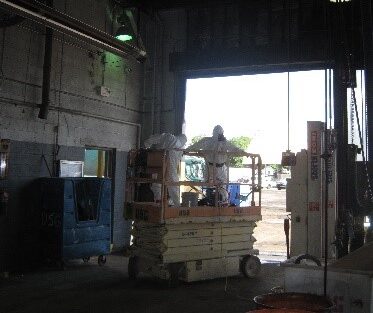
Most homeowners and business owners are aware of the dangers related to the disturbance and removal of asbestos containing materials and lead-based paint, but fewer are aware of the dangers associated with the disturbance and remediation of accumulated bird droppings in building spaces. Birds seek shelter, like other small animals, particularly in the colder months, and can become more than just a nuisance. The presence of birds, especially in high numbers, can lead to a buildup of bird droppings in places such as flat roofs, garages and window sills, which may lead to bigger problems than just “messy” conditions.
Can bird droppings make you sick?
The high nutrient content of the droppings can create a well-sourced breeding environment for organisms that are harmful to humans. The droppings become harmful when disturbed, causing small particles to become airborne, and the inhalation of these particles may lead to that person becoming ill.
The diseases typically associated with bird droppings are as follows:
- Cryptococcus- results in lung infection that may spread to the brain, causing meningoencephalitis1;
- Histoplasmosis- results in flu-like symptoms (fever, dry cough, chest discomfort); severe infections may cause vision problems, mouth ulcers, seizures, encephalopathy, and death2 and;
- Psittacosis- can cause mild illness or pneumonia (lung infection)3

Who is at risk?
People who are particularly sensitive to becoming ill from bird droppings are those with compromised immune systems, seniors, and infants. Additionally, people who work in areas where droppings are prominent may be at risk through inhalation exposure. Workers who handle the remediation of bird droppings and directly handle the material during cleanup should take caution and preventative measures to avoid direct inhalation of said material.
How do I handle the cleanup?
Bird dropping remediation typically involves of the following items/steps:
- Personal Protective Equipment (PPE) required to be used by all members of the clean-up crew such as
- Face masks, rubber gloves, disposable booties, Tyvek® suits, etc.
- Negative Air Filtration
- Dampen droppings by applying water, via mist, in-order to lessen the amount of dust or debris from entering the air during removal
- Droppings are removed via manual methods (steel brush, shovel, etc).
- Double bagged droppings and disposable clothing may be disposed of in regular municipal waste
Proper procedures should be followed when any remediation or cleanup activities are conducted to ensure workers remain safe and illness free as well as to prevent other building occupants from being exposed.

Don’t forget prevention of an ongoing problem.
Coupled with bird dropping remediation should be the removal & prevention of birds from the area of concern. Bird removal should be performed in a humane way, and any openings or accessways used by the birds should be patched to prevent further access and continuation of the bird dropping issue.
If you have any questions about remediation or clean-ups, contact one of Walden’s expert environmental engineers.
1Emedicine health – https://www.emedicinehealth.com/cryptococcosis/article_em.htm
2 Emedicine health – https://www.emedicinehealth.com/histoplasmosis/article_em.htm
3 CDC – https://www.cdc.gov/pneumonia/atypical/psittacosis/index.html
